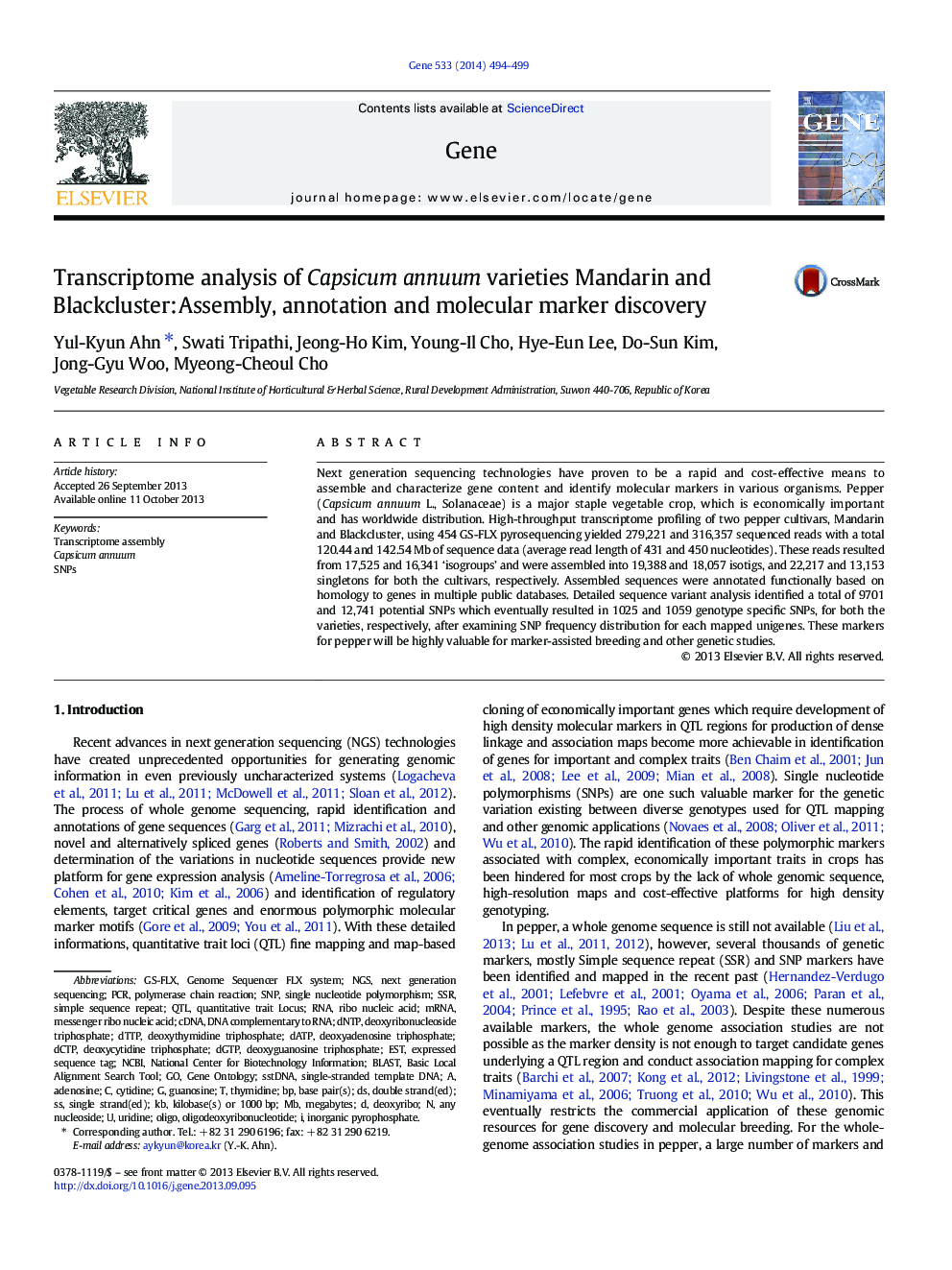| Article ID | Journal | Published Year | Pages | File Type |
|---|---|---|---|---|
| 2816819 | Gene | 2014 | 6 Pages |
•High-throughput sequencing of two pepper varieties using 454 GS-FLX pyrosequencer•De novo transcriptome assembly, function annotation and marker discovery are performed.•279,221 and 316,357 sequenced reads with 120.44 and 142.54 Mb of sequence data•Total 9701 and 12,741 potential SNPs were observed for both pepper varieties.•1025 and 1059 genotype specific SNPs were discovered for both pepper varieties.
Next generation sequencing technologies have proven to be a rapid and cost-effective means to assemble and characterize gene content and identify molecular markers in various organisms. Pepper (Capsicum annuum L., Solanaceae) is a major staple vegetable crop, which is economically important and has worldwide distribution. High-throughput transcriptome profiling of two pepper cultivars, Mandarin and Blackcluster, using 454 GS-FLX pyrosequencing yielded 279,221 and 316,357 sequenced reads with a total 120.44 and 142.54 Mb of sequence data (average read length of 431 and 450 nucleotides). These reads resulted from 17,525 and 16,341 ‘isogroups’ and were assembled into 19,388 and 18,057 isotigs, and 22,217 and 13,153 singletons for both the cultivars, respectively. Assembled sequences were annotated functionally based on homology to genes in multiple public databases. Detailed sequence variant analysis identified a total of 9701 and 12,741 potential SNPs which eventually resulted in 1025 and 1059 genotype specific SNPs, for both the varieties, respectively, after examining SNP frequency distribution for each mapped unigenes. These markers for pepper will be highly valuable for marker-assisted breeding and other genetic studies.
